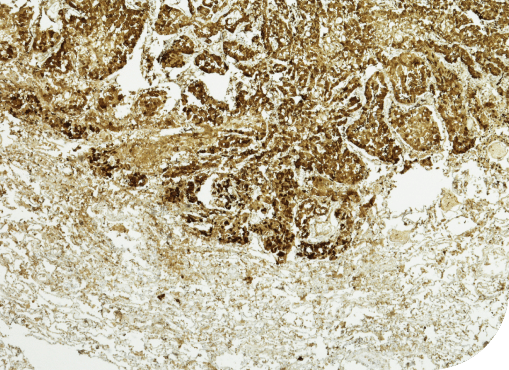Mesothelioma Pleurectomy and Decortication
Pleurectomy and decortication for mesothelioma patients is a two-phase surgical procedure during which a surgeon removes the membranes surrounding the lungs and tumors from the lungs. Pleurectomy/decortication is generally not a cure, but it may slow the progression of mesothelioma, increase life expectancy, and improve the quality of life.
Home » National Mesothelioma Law Firm » Mesothelioma Cancer » Mesothelioma Treatment » Meso Treatment Surgery » Mesothelioma Pleurectomy and Decortication
What happens during a pleurectomy and decortication surgery?
What to Expect During and After the Procedure
Is pleurectomy/decortication the right treatment option for me?
What is my life expectancy after a pleurectomy and decortication?
Is pleurectomy/decortication a cure?
What are the alternatives to pleurectomy and decortication?
Robert B. Cameron, MD FACS, Pioneer of Pleurectomy and Decortication
Mesothelioma is a cancer of the mesothelial membranes, the thin membranes surrounding the internal organs. Pleural mesothelioma is cancer of the pleura, which are the mesothelial membranes surrounding the lungs and chest cavity. The visceral pleura surround the lungs, and the parietal pleura line the walls of the chest cavity.
A mesothelioma pleurectomy/decortication is a two-step lung-sparing surgical procedure that begins with removing the pleural membranes and concludes with removing tumors from the surface of the lungs. This is a less invasive alternative than extrapleural pneumonectomy, which involves removing an entire lung and adjacent tissues.

What happens during a pleurectomy and decortication surgery?
During a pleurectomy, an incision is made between the ribs as close as possible to the bulk of the cancer. Both the parietal pleura and visceral pleura are removed. Any visible tumors are then extracted from the surface of the lungs, a procedure known as resection. This surgery takes approximately four to six hours, according to the Annals of Translational Medicine.
The surgeon will remove any lymph nodes that appear abnormal. Certain lymph nodes may also be routinely removed and examined under a microscope to check for the spread of cancer cells.
Extended Pleurectomy/Decortication
If the mesothelioma tumors have spread to nearby tissues, they are also removed. When this occurs, the procedure becomes known as an extended pleurectomy/decortication. The affected tissues are typically the diaphragm and the pericardium, the mesothelial lining surrounding the heart.
The diaphragm is near the peritoneum, the mesothelial lining surrounding the stomach. Parts of the peritoneum have often become fused with diaphragm tissues. Removing tumors from the diaphragm without affecting the peritoneum can be challenging, and parts of the peritoneum are commonly removed as part of the surgery.
Tumors that have spread to the pericardium may necessitate the removal of all or part of the pericardium, depending on the extent.
In either case, reconstruction of the diaphragm or pericardium is necessary. This is sometimes done using the patient’s own tissue, but using a synthetic medical mesh is more common. The mesh is often soaked in an antibiotic solution before implantation to reduce the risk of infection.
What to Expect During and After the Procedure
During the procedure, the patient will be intubated with a special apparatus known as a double-lumen endotracheal tube. These tubes isolate the lungs so each lung functions independently. This allows surgeons to work on one lung while allowing the opposite lung to continue breathing.
After surgery, the patient will be placed in the post-anesthesia care unit (PACU) or the intensive care unit (ICU).
The patient will undergo a series of tests, including blood tests, urinalysis, and chest X-rays. The breathing tubes will remain in place until the patient’s pleural space stabilizes, usually in two to three days.
The doctor will check to ensure the patient is not experiencing air leaks from the chest cavity. If this does occur, the chest tubes must remain in place until it resolves. However, the patient may be able to return home with portable chest tubes.
Is pleurectomy/decortication the right treatment option for me?
You may be a good candidate for this procedure if you meet the following criteria:
- The tumor is confined to one side of the chest cavity and has not metastasized to the chest or abdomen.
- Your mesothelioma tumors are the epithelioid cell type.
- Your tumors are the biphasic cell type, and the majority of cancer cells are epithelial.
- You have sufficient cardiopulmonary function to facilitate breathing post-surgery.
Your doctor will perform a series of tests to help determine whether you are a candidate for pleurectomy/decortication. Testing may include:
- A CT scan with intravenous contrast or PET-CT scan to assess the main tumor and its spread
- Biopsies from each side of the pleura
- A ventilation and perfusion scan, which uses radioactive tracers to evaluate both airflow and blood flow in the lungs
- Pulmonary function tests, which measure how much air goes into and out of your lungs as you breathe
Your doctor will also consider your overall health status, mesothelioma stage, comorbidities, and how the procedure fits into your treatment plan and goals.
The Advantages of Pleurectomy/Decortication
Before pleurectomy/decortication surgery, extrapleural pneumonectomy was the primary surgical option for patients with operable mesothelioma.
Extrapleural pneumonectomy is a radical procedure associated with two-and-a-half times the risk of death during the procedure or within the first 30 days afterward, according to a study published in the Annals of Thoracic Surgery. Unlike extrapleural pneumonectomy, pleurectomy/decortication is considered safe for patients over 70.
Compared to those who undergo lung removal, patients who undergo pleurectomy/decortication experience an improved quality of life, with less fatigue and shortness of breath afterward.
Complications of Pleurectomy and Decortication
Pleurectomy/decortication is a major surgery with these potential complications during and after:
- Respiratory failure
- Internal bleeding
- Arrhythmia
- Prolonged air leaks
- Anesthesia-related complications
- Death during the procedure
Before undergoing this procedure, you should have an open discussion with your mesothelioma care team to ensure the benefits outweigh the risks. You are always in control of your medical care and should not undergo any procedure you do not completely understand and freely consent to.
What is my life expectancy after a pleurectomy and decortication?
Your life expectancy will vary based on individual factors, such as your overall health, the stage of your disease, and how it progresses. An observational study published by the Journal of Thoracic Disease found that the overall survival of patients with epithelial mesothelioma after pleurectomy/decortication was 32 months.
This was a statistically significant improvement compared to an overall survival of just 10 months for patients who received chemotherapy alone. Patients who underwent extrapleural pneumonectomy had an overall survival of 23 months.
Is pleurectomy/decortication a cure?
Pleurectomy/decortication surgery is intended to extend survival and improve quality of life. However, it is not a cure. While all visible tumors get removed during decortication, microscopic tumors may be left behind. Even a single remaining cancer cell could grow and become a fatal tumor.

What are the alternatives to pleurectomy
and decortication?
Some mesothelioma patients are not candidates for pleurectomy and decortication. Mesothelioma may be considered inoperable if it has spread to distant body parts or if the disease is the sarcomatoid cell type. In this case, nonsurgical treatment options are necessary.
Nonsurgical mesothelioma treatment options include:
- Chemotherapy
- Radiation
- Immunotherapy
- Combination therapy
Pleurectomy/decortication is often done in combination with these therapies to maximize the benefits. You may also receive palliative therapy to minimize symptoms and increase your quality of life. It may include a combination of mesothelioma drugs, alternative therapies, and radiation.

Robert B. Cameron, MD FACS, Pioneer of Pleurectomy and Decortication
Dr. Robert Cameron is the scientific advisor for the Pacific Mesothelioma Center at the Pacific Heart, Lung, and Blood Institute. He is considered a pioneer in pleurectomy and decortication surgery and has performed the procedure since the early 1990s. He has performed more than 300 successful pleurectomy/decortications.
Dr. Cameron’s approach is to treat pleural mesothelioma as a chronic condition, like diabetes or high blood pressure, rather than attempt to cure it. As a result, he sees extended life spans in his mesothelioma patients, with some living six years or longer.
Ultimately, mesothelioma tumors generally return after pleurectomy/decortication. Dr. Cameron manages them with novel procedures, including:
- Cryoablation: a procedure that uses extreme cold to kill cancer cells
- Radiation: a targeted therapy that kills cancer cells
- Immunotherapy
- Specialized surgery
Dr. Cameron offers pleurectomy and decortication at the following locations:
- The David Geffen School of Medicine at the University of California at Los Angeles (UCLA), where he is a professor of cardiothoracic surgery and surgical oncology and the founding chief of the division of thoracic surgery
- The West Los Angeles Veterans Administration Medical Center, where he serves as chief of thoracic surgery
Treatment Centers That Offer Pleurectomy and Decortication
Pleurectomy/decortication has become the standard of care for mesothelioma patients and is available at most mesothelioma treatment centers. These specialty centers focus on mesothelioma diagnosis and treatment. They also provide palliative treatment, emotional support, and referrals to other mesothelioma resources.
Mesothelioma doctors at these centers often participate in clinical trials and mesothelioma research. Mesothelioma treatment centers are located throughout the United States and include:
- Moffitt Cancer Center in Tampa, Florida
- Brigham and Women’s Hospital in Boston
- Memorial Sloan Kettering Cancer Center in New York
- Cancer Treatment Centers of America in Atlanta, Chicago, and Phoenix
- Penn Medicine in Philadelphia
Paying for Pleurectomy/Decortication Surgery
Medicare Part A covers necessary surgeries such as pleurectomy and decortication. You may be eligible for Medicare if you are 65 or older or receive Social Security Disability. If you are a veteran exposed to asbestos in the military, you can receive VA benefits, including free health care for your service-connected mesothelioma.

The Lanier Law Firm Can Help
For more than 30 years, our experienced mesothelioma lawyers at The Lanier Law Firm have been helping mesothelioma patients and their families secure the financial compensation they need to cover medical expenses, lost wages, and other damages resulting from asbestos exposure.
Our compassionate legal team will fight tirelessly to ensure you receive the compensation you deserve. If you have been diagnosed with mesothelioma, you have limited time to file a claim for compensation. Contact us today to schedule a free consultation.
By submitting this form, you agree to our terms & conditions. Please read the full disclaimer



